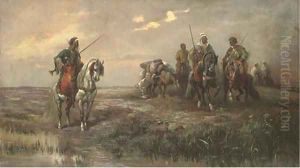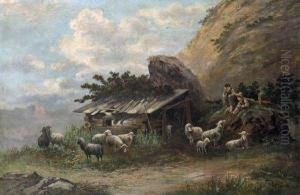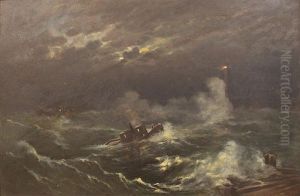Frederick Von Luerzer Paintings
Frederick Von Luerzer was an Austrian-American painter known for his landscape and architecture paintings. Born in 1851 in Austria, he embarked on his artistic journey within the rich cultural landscapes of Europe, honing his skills and developing a keen eye for the subtleties of light and shadow, which would later become a hallmark of his work. In search of new vistas and experiences, Von Luerzer migrated to the United States, bringing with him a European sensibility that he would seamlessly blend with the American landscape.
Von Luerzer's work is characterized by its detailed rendering of natural and urban scenes, capturing the essence of the American West and Midwest with a unique blend of realism and romanticism. His paintings often depicted the rugged beauty of the American landscape, from the serene lakes of Minnesota to the grandeur of the Rocky Mountains, showcasing his versatility and deep appreciation for the natural world. Despite his European roots, Von Luerzer's art resonated with the American spirit, earning him recognition and acclaim in his adopted homeland.
Throughout his career, Frederick Von Luerzer exhibited his work in various galleries and was actively involved in the artistic communities of the regions he lived in, including Minnesota and later in the Pacific Northwest. His contributions to the art world were cut short by his untimely death in 1913, but his legacy lives on through his paintings, which continue to captivate and inspire. Von Luerzer's ability to capture the transcendent beauty of landscapes has cemented his place in the annals of American art history as a bridge between the Old World and the New, and as a testament to the universal language of art.











